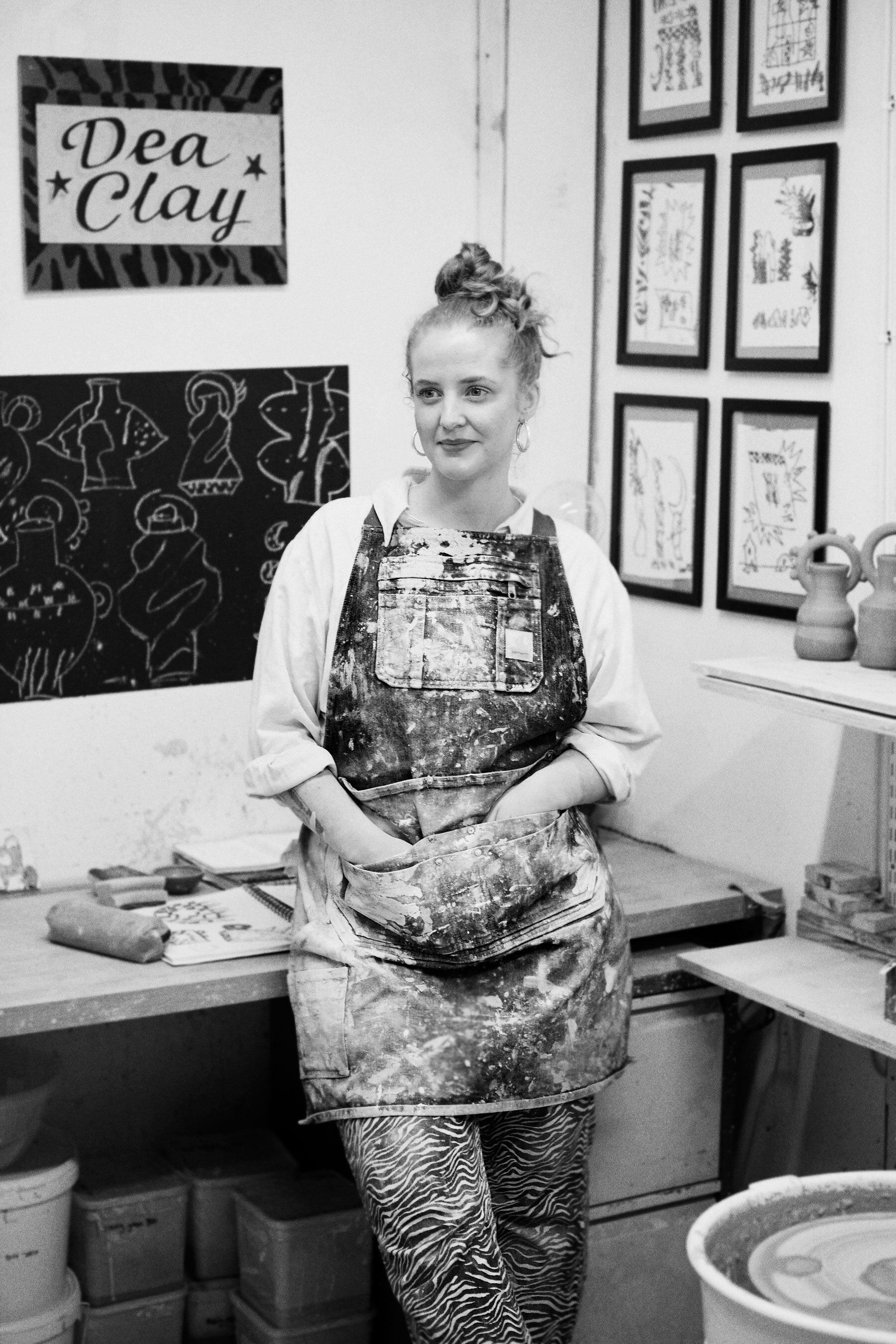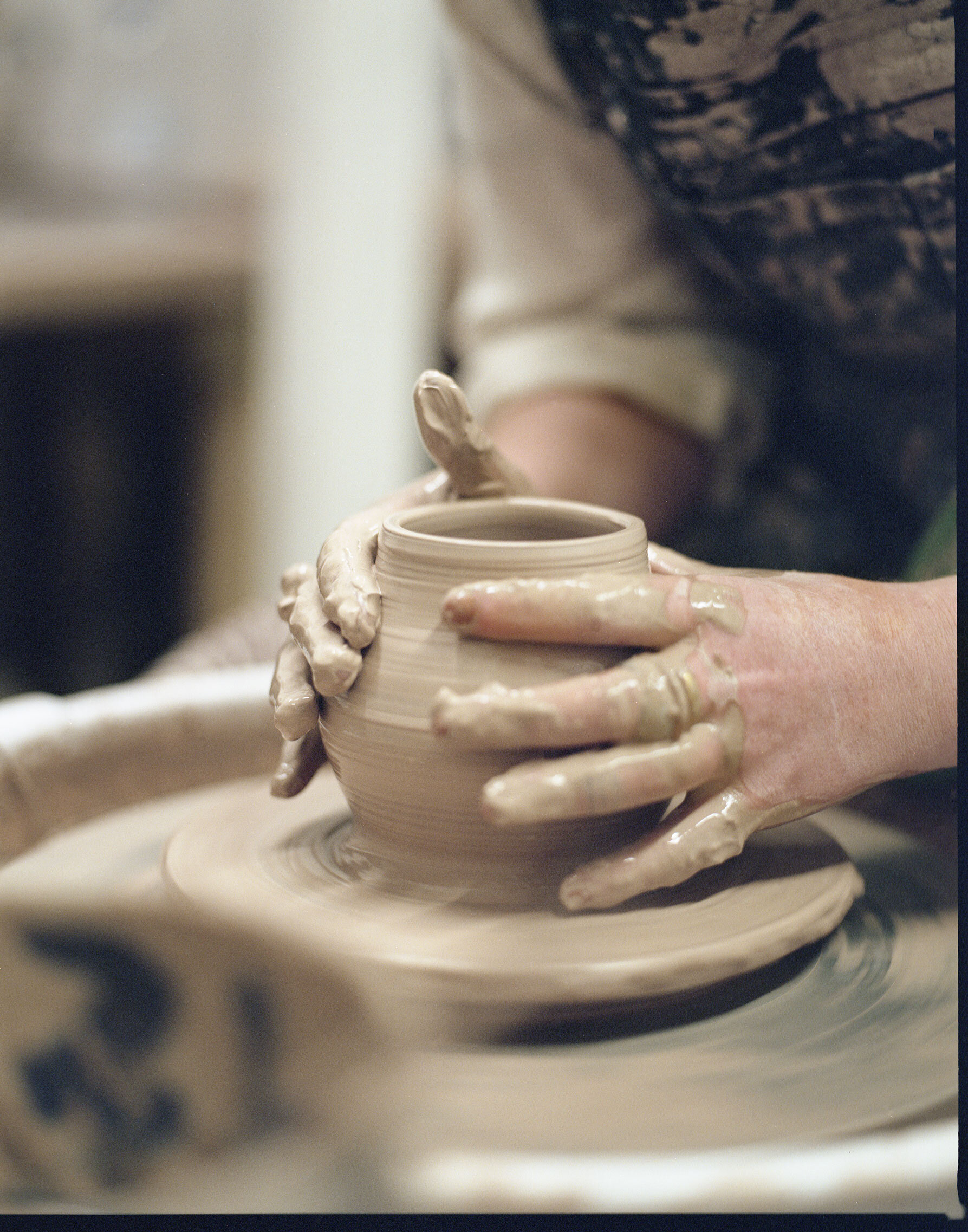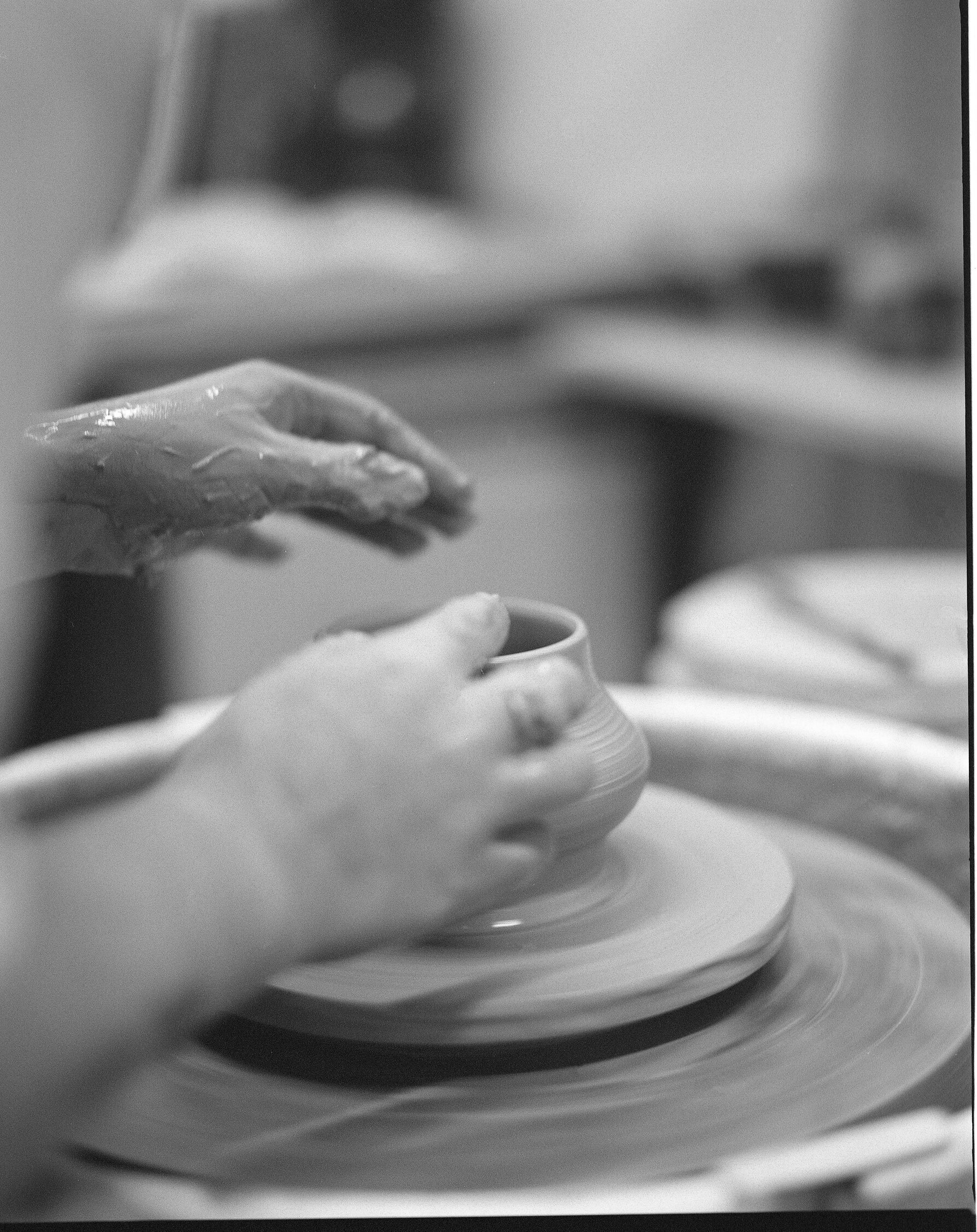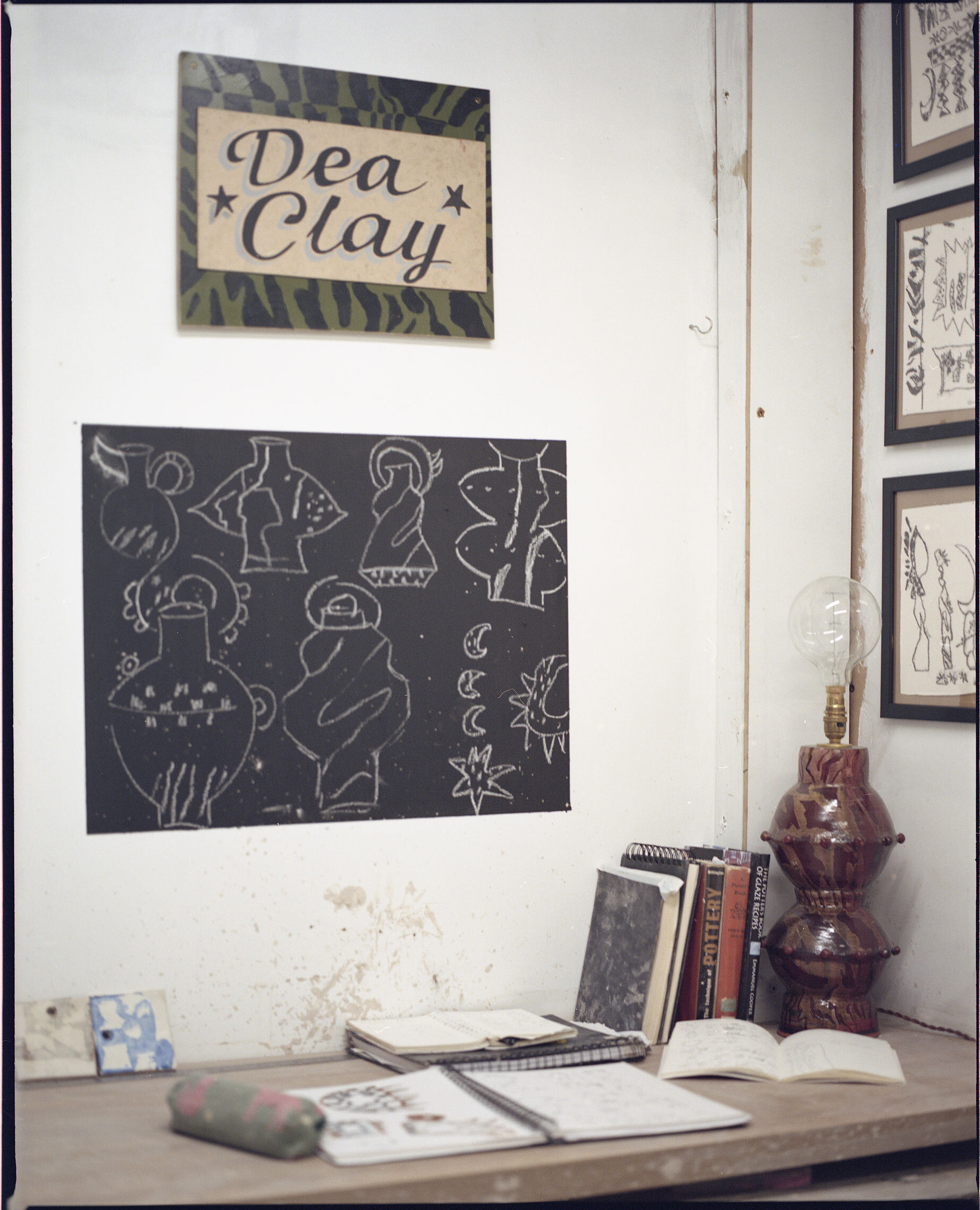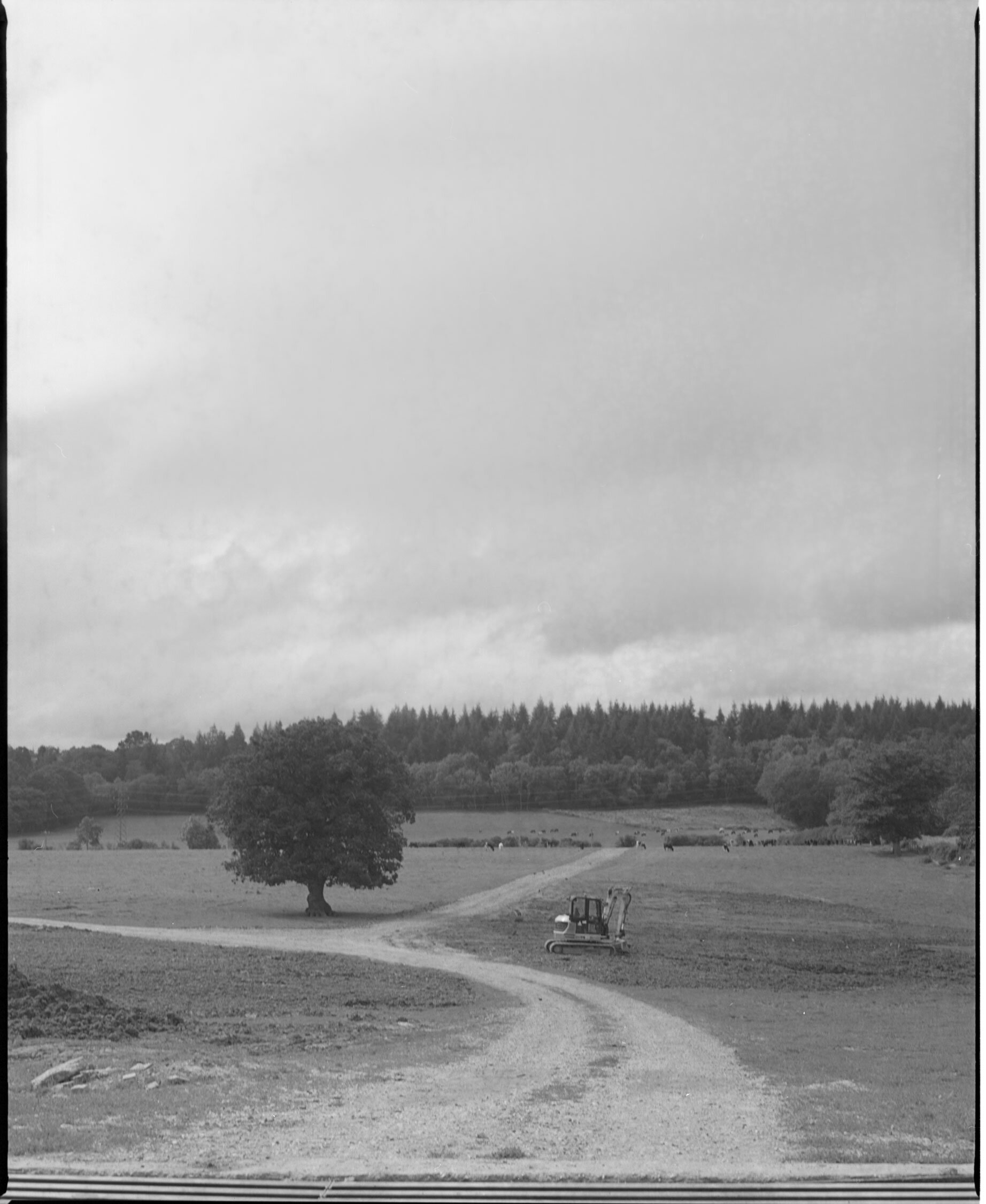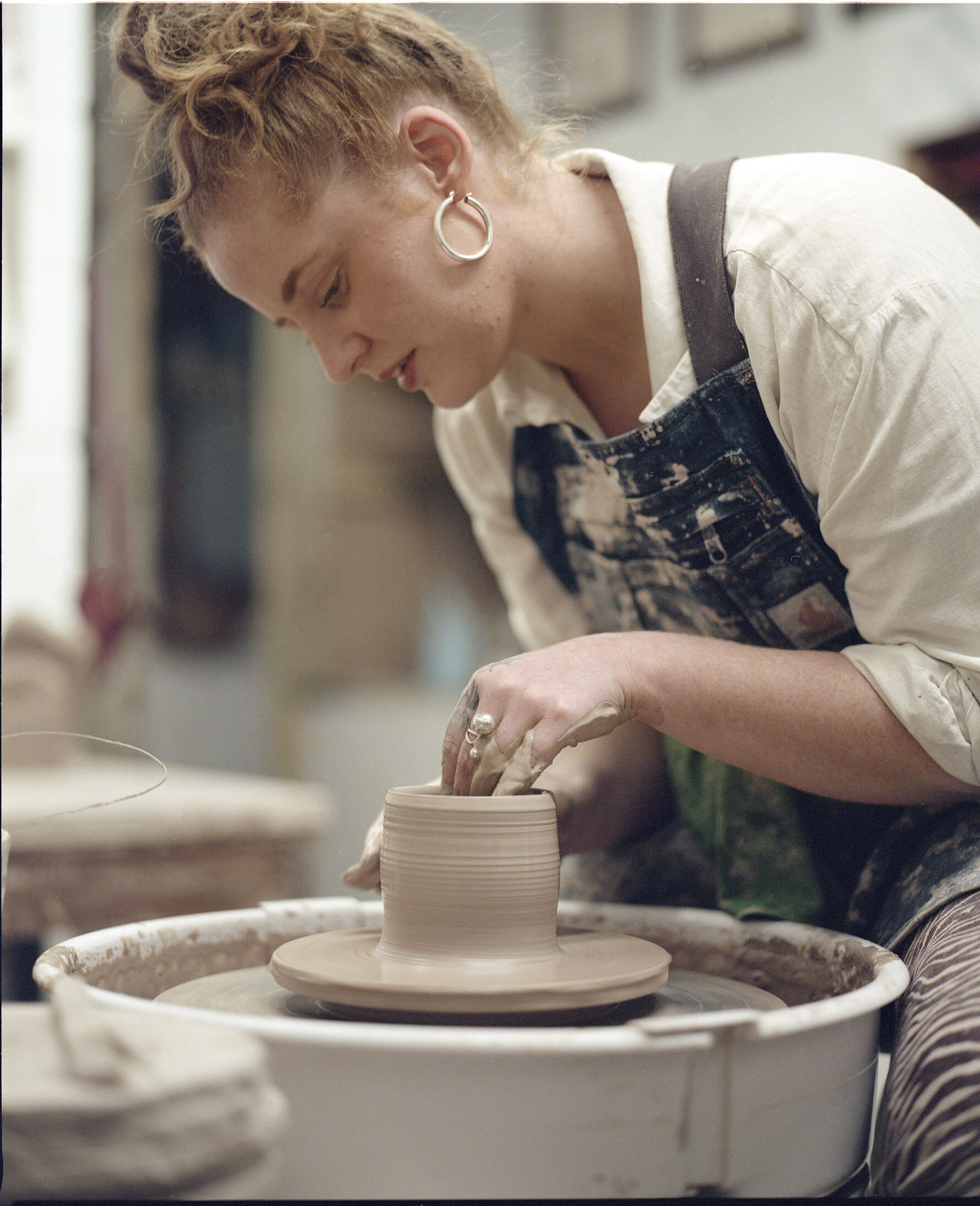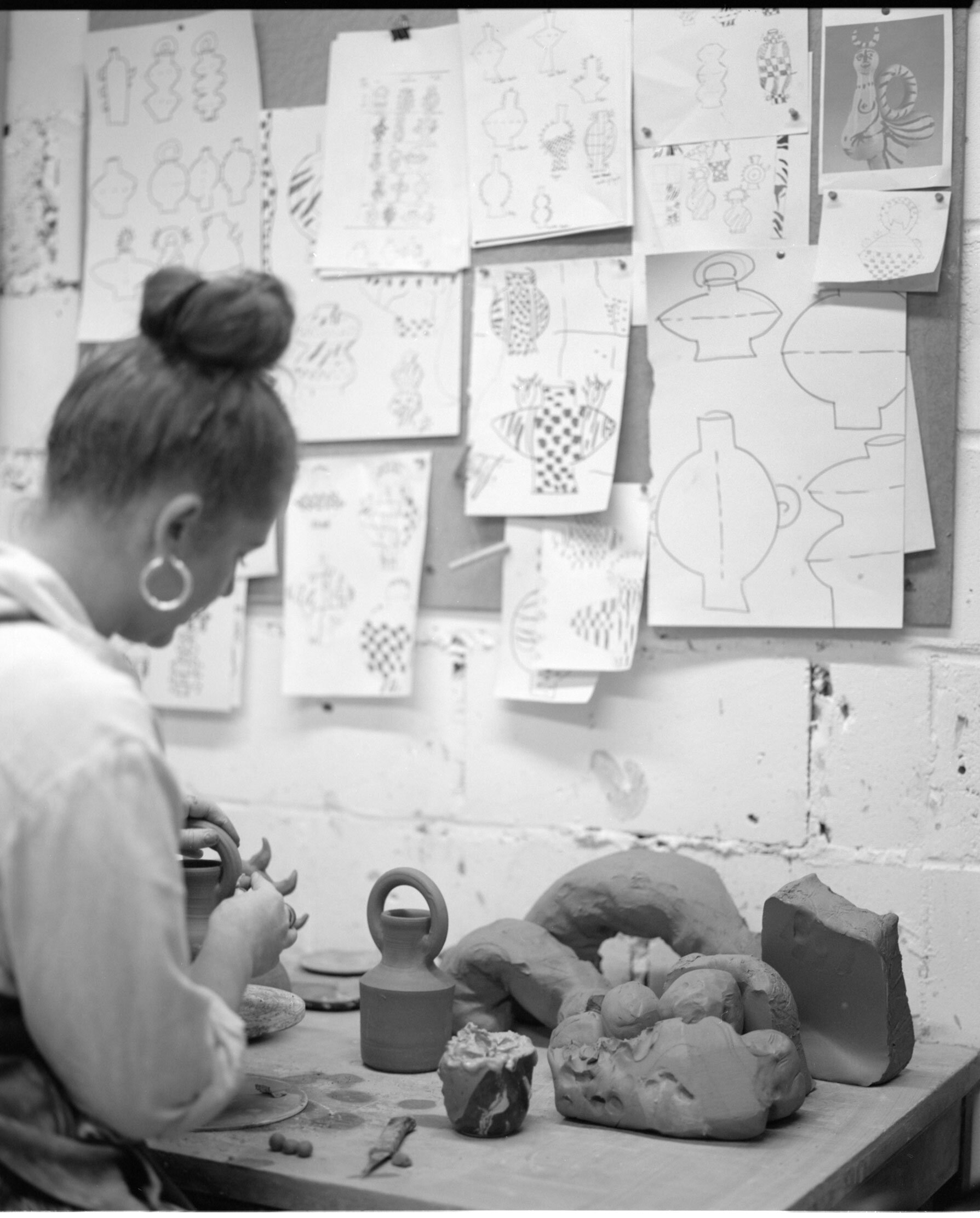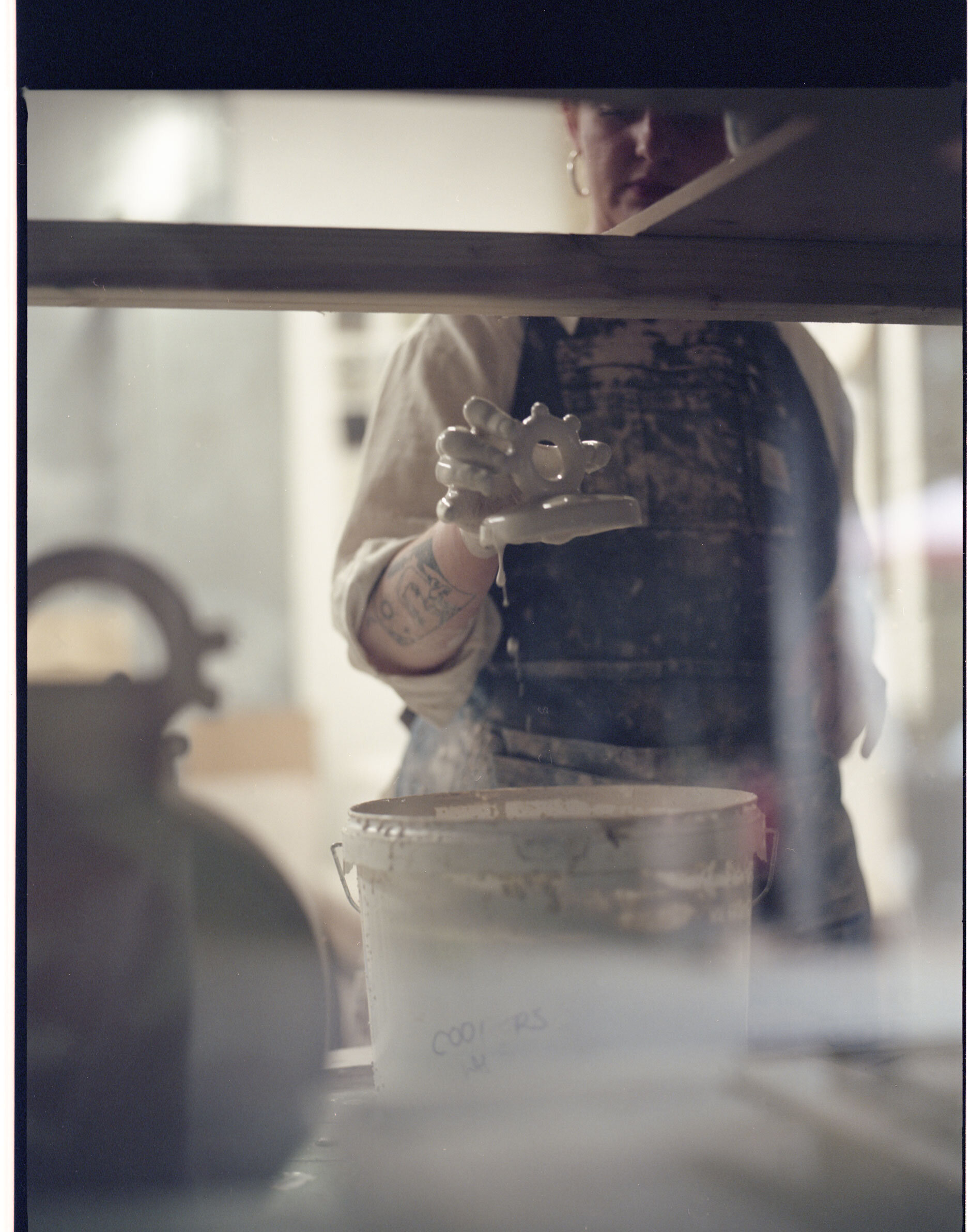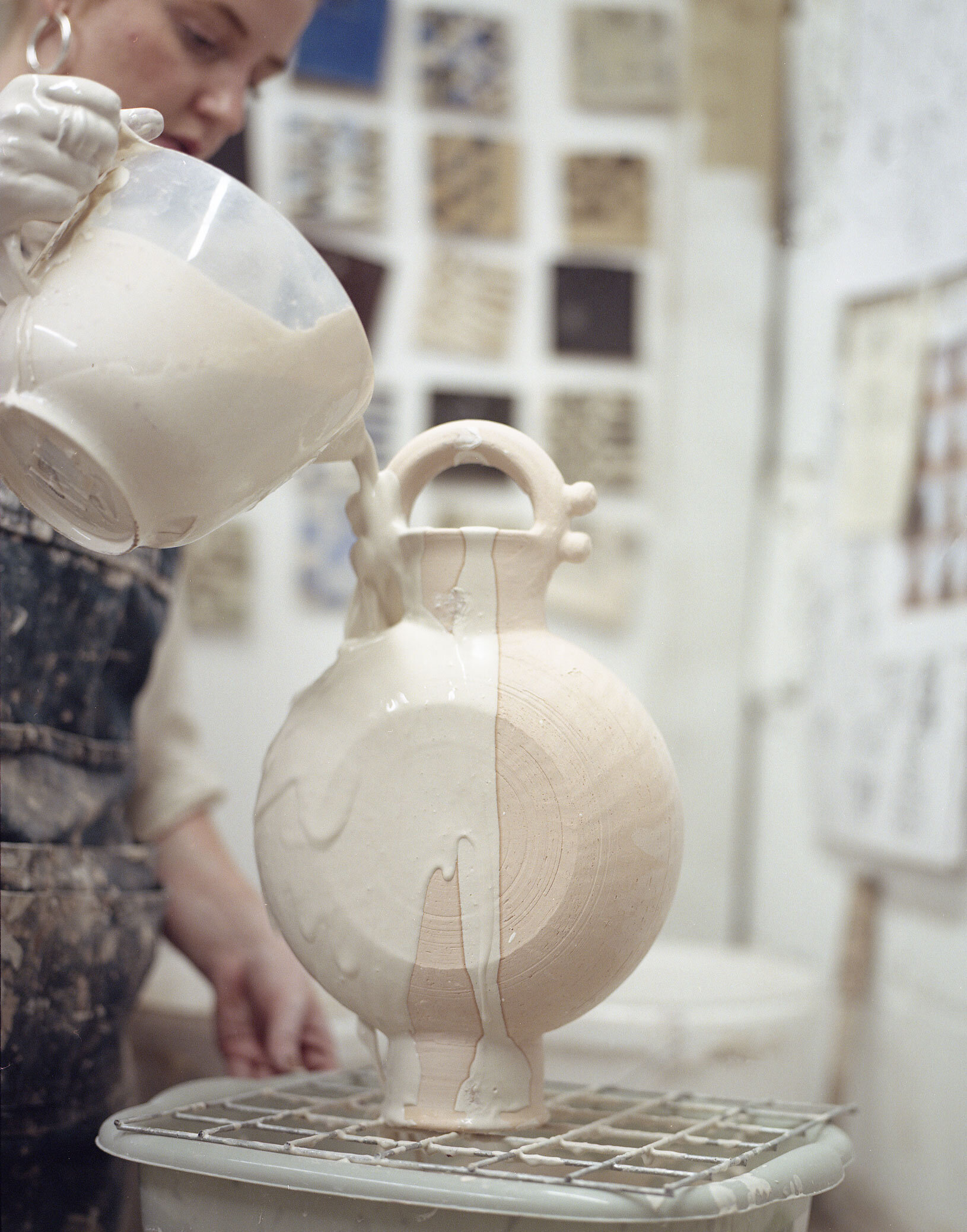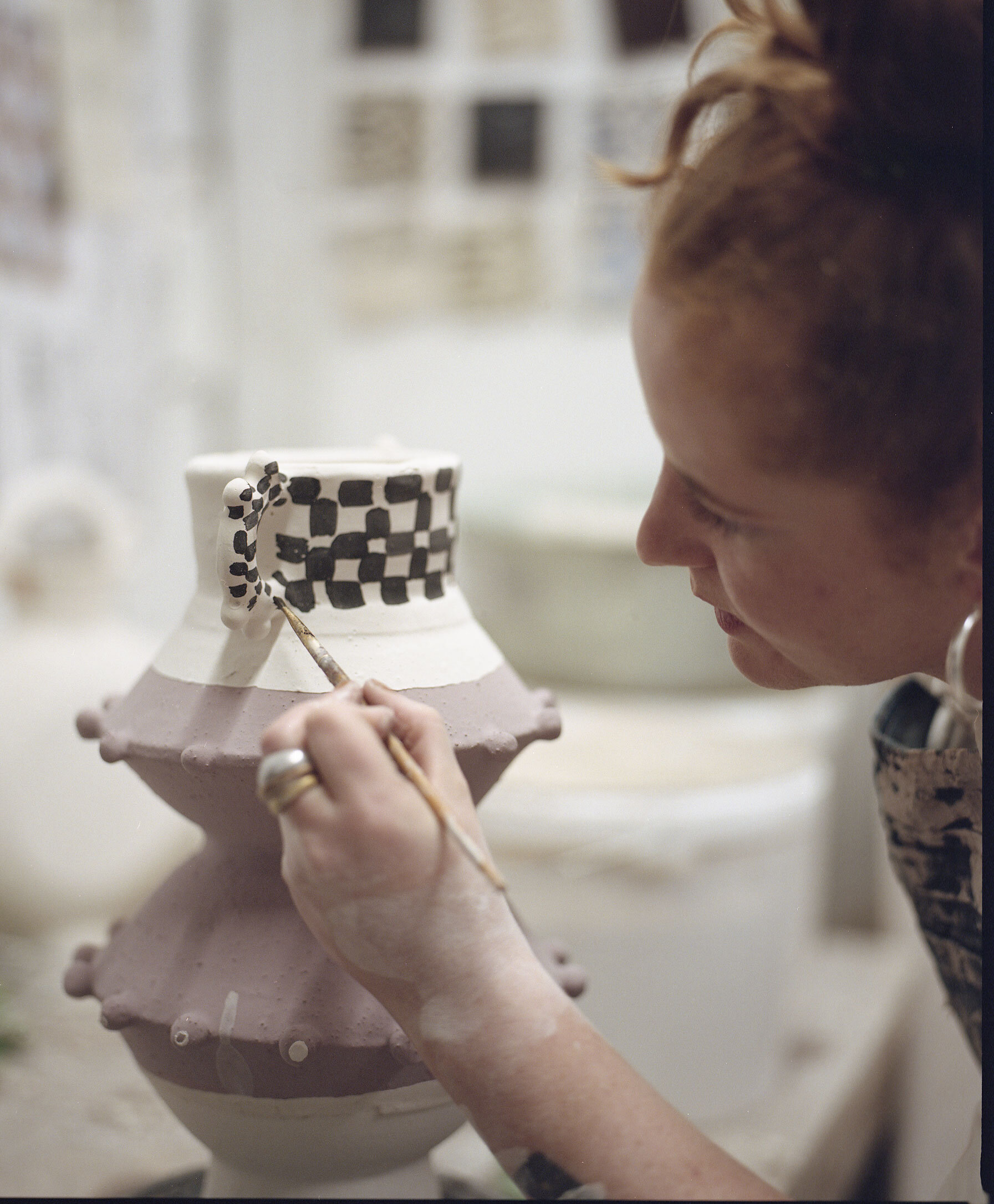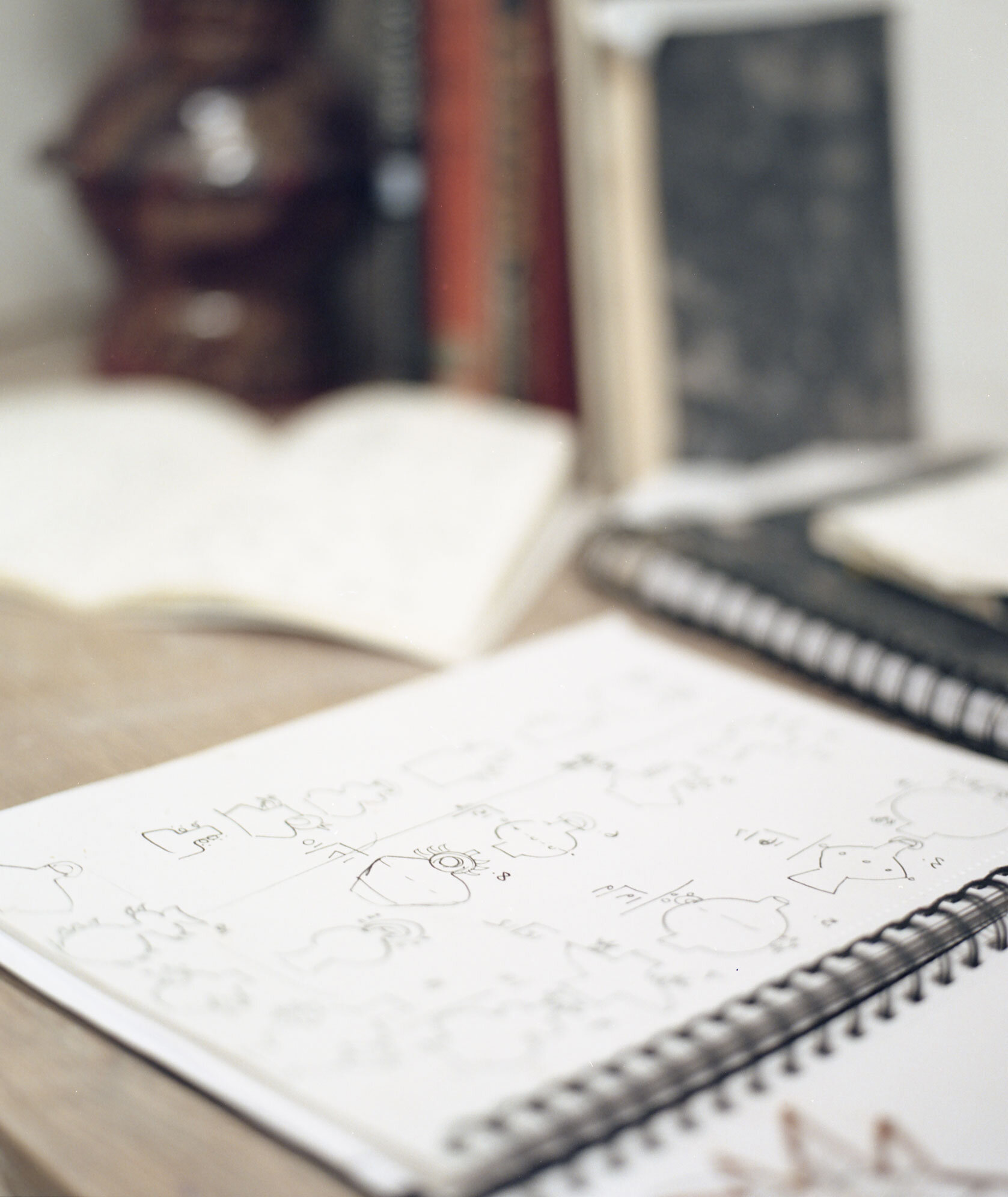Dea Domus reimagines ancient ornamental ceramics as modern abstract sculptures
British artist Dea Domus creates decorative ceramic vases inspired by ancient civilisations and the patterns of the natural world. Maker Sophie Frost is the creative force behind the multidisciplinary studio – that blurs the disciplines of fine art, design and craft across ceramics and art objects.
Known for her distinctive collections of artisan studio pottery, her latest series of works features modern-day relics adorned with expressive patterns and unusual details.
The ceramicist looks to nature and the human body to guide the forms of her sculptural vessels, often seen decorated with bobble-lined handles and sequences of spikes. Her growing archive of ceramic works are instantly recognisable by Frost’s signature abstract markings in earthy tones of browns, greens and blues.
“Drawing with pattern and mark-making has been central to my practice for the past decade. So this has naturally developed within my ceramics. It creates a closer relationship between nature and marks found in the natural world, which I find can transcend us into one.”
“Ceramics compared to my other disciplines have a deeper relationship to the body – with particular reference to the foot, belly, neck and ears of the pot. My vessels have a stronger figurative relationship to humans, whereas my works in other mediums seem to have a deeper connection with the spiritual.”
Although ceramics remains a key part of Frost’s practice, she also works on paintings and designs objects and furniture from her converted barn studio in Hampshire. Recent projects include a number of ornamental lamp bases and a series of carved wooden tables topped with hand-painted stoneware tiles.
Sharing a workspace with her Father, Frost cites growing up with artistic parents as a key influence to succeeding in a similar career journey. She reveals, “creative thinking and expression has always come very naturally to me, my father is a sculptor and my mother is a painter and printmaker – so I would say it was half-nature, half-nurture as to how I followed this pathway.”
“At university, I formed a very personal and clear aesthetic with pattern and shape. I was captivated at the surface of camouflage within the natural world, which led to weaving and textiles. This interest slowly developed with the glazing and decorating techniques of ceramics.”
After completing studies at London’s Slade School of Fine Art, the artist trained at a local ceramics studio with a focus on traditional wheel-thrown pottery. Here she became familiar with the historical ceramic techniques, pigments and glaze recipes passed down through generations of potters.
Frequently working across multiple mediums, Frost explains the differences she encounters between the unpredictability of ceramics and her other disciplines of choice.
“In some ways, ceramics has more set limitations including kiln size, glaze formulas and material qualities. You can certainly test and experiment with these boundaries but they are there initially. The main difference between them is you are working with the elements of fire, water and air to create the pieces, there is a much greater power than yourself at play.”
“My process of carpentry, painting and printmaking is much more linear. They have a closer relationship to my drawing and the essence of where that comes from within my soul and universe. “
The artist reveals the most rewarding aspect of ceramics is observing the many processes of creating a final glazed piece from essentially “a lump of mud” adding, “there is only so much control you have over the work, elements and nature have a large part to play.”
“Ceramics is a very tactile medium; my hands are my tools at the beginning of every pot. You must really engage with yourself, mind and body in the early stages of creating pieces. Some days your hands can work instinctively and others you have to really tune into the material and the essence of what it is that you are doing.”
“It’s unpredictable, making with your hands and the material being earth-affected by elements will always have an intuitive response to a certain degree. I allow myself to lead the material and essence of the pieces throughout each stage. The process of wheel throwing will always give a foundation to a formula of how I start the works and how they are formed sculpturally.”
Frost notes how she’s honed “an essence and depth” to where her work comes from, developing her own processes over time throughout her journey.
The recent works from Dea Domus feature a series of ornate sculptures that reference ancient artefacts from historical civilisations around the world.
“There is a much more personal cosmic relationship with this latest collection. The pieces have become less traditional and much more influenced by my drawings and studies into prehistoric discoveries of the ancient Egyptian Kerma civilisation and the remains of the Neolithic temples in Malta.”
“I’m inspired by archaeology, artefact, and anthropology.”
“I find my engagement with these three things both an academic and visual inspiration. Objects and ancient civilisations are fascinating to me. I find similarities in the forms of objects made thousands of years apart and in different parts of the world magical – especially studying how and why they are made.”
The artist also lists sculptors and designers including Ken Price, Nikki De Saint Phalle and Ettore Sottsass as core influences early on in her practice.
“My personal visual language and creative thinking is obsessed with form as much as it is surface. Studying their work highlighted ceramics as a medium to marry my two practices, painting and sculpture.”
Frost explains how she tends to approach any medium in a similar way with sketches, doodles and drawings after an initial research stage.
“Some can be intended as designs but they are generally just to capture a shape or a vision that I may be thinking about. As ideas become physical and 2D becomes 3D, the piece starts to dictate its direction as I work – informed by my personal visual language.”
“Research comes naturally as I love the escapism of learning and thinking beyond visual concepts. Once works become physical and less of an idea or concept it will always take on a path of its own which does engage with intuitive working.”
“Music really helps me to get into a focused and connected headspace to the energy I like to be in. I like to sit with books, drawings and images or reflect on old work with a coffee before putting my apron on.”
Based in a large barn conversion in the Hampshire countryside, Frost reveals the seasonality of her working environment and how it affects her practice.
“I can indulge in my own creative thinking a lot more. There is time and space for mediation and I am generally closer to nature which I find therapeutic.”
“Currently it does dictate my process due to being in a large barn which I find seasonally affects my work. There is a large difference in quantity between summer and winter as well as the type of work I make. Summer has a focus on ceramics and winter is a time for drawing, painting, and carpentry. This is purely due to temperature and sun.”
The artist reflects on the stillness of the past year and how she sees her practice growing forward into the future.
“The last year or so has really allowed me time and space to develop my practice and ideas. I’m generally a slow processer, so I had the luxury of immersing myself in my own visual language and ideas at my own pace. I also found the power of rest and the benefit this has on my creative thinking.”
“I really hope to start travelling with my practice. I would love to go to areas of the world that is ceramic-rich and still very much part of people’s ancestry and daily life. There is so much to be learnt about the medium, both its history and position in the world today and its process.”
View more work by Dea Domus here.

